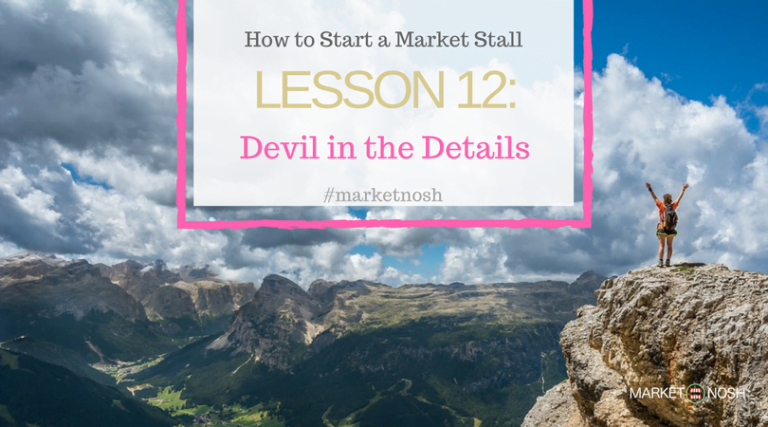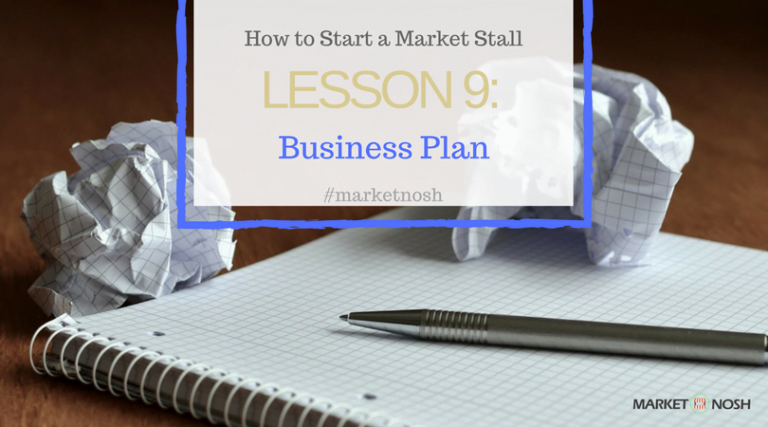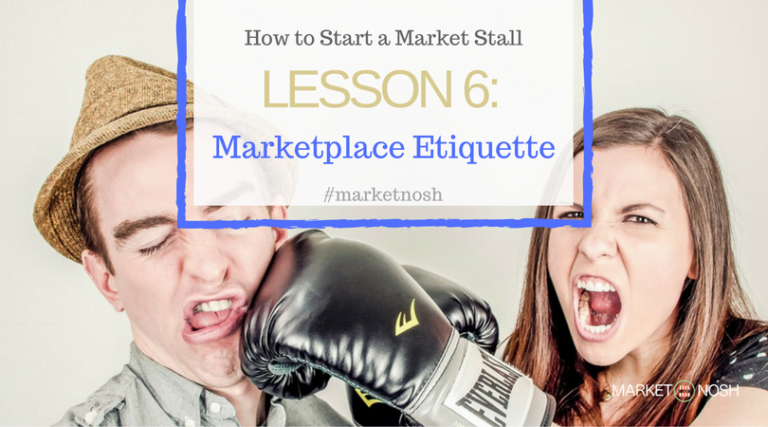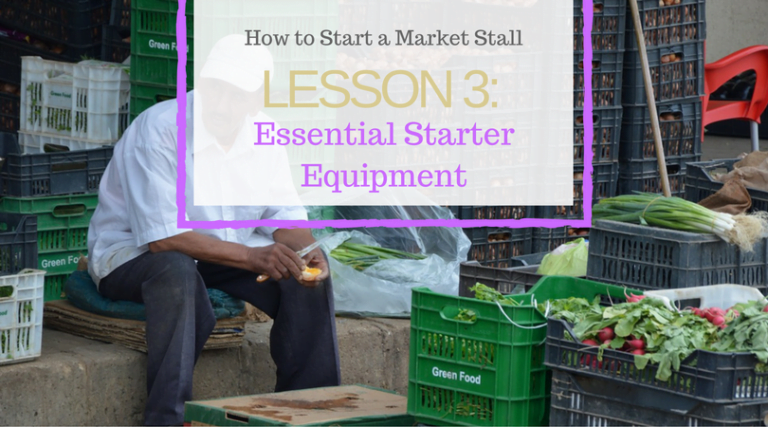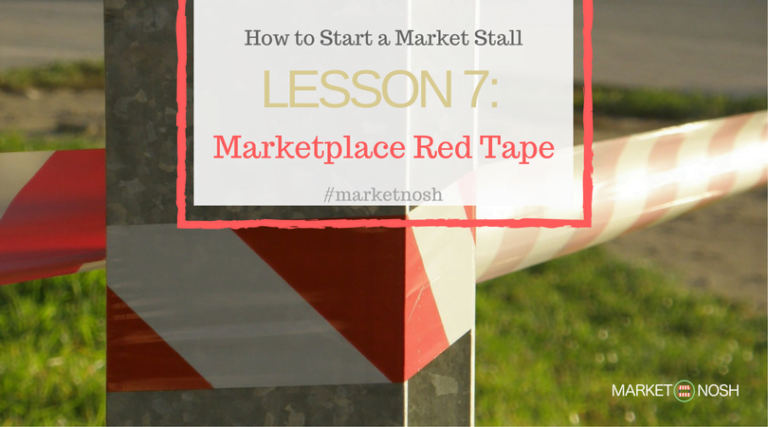Lesson 1: A History of the Marketplace
To understand where the modern Marketplace comes from we have to first look at where we came from as humans. Alright, we’ll briefly look at where we came from as humans…
For more lessons on How to Start a Market Stall
The Three Stage System
There is a rough system (although difficult to use unless broadly talking about time periods as we are) known as the Stone, Bronze and Iron Ages of human kind*.
The Stone Age people are called so as they fashion tools from stone. They forage and live in relatively small groups. The world is still very wild and it is sheer determination to survive till the next day. They are learning though and between 6000 BCE and 2500 BCE a change begins that turns the world on it’s head.
The Bronze Age happens when humans begin to work with metals to form them into tools and jewellery. It is a long transition period of 3000-4000 years, which starts with copper smelting and continues into more advanced smelting as different metal are found.
It is really during the Bronze Age that Sumer develops into what is commonly known as the first civilisation in South Mesopotamia. (Southern Iraq to us) We can almost count Ancient Egypt here which is independently developing around the Nile.
The Bronze Age Collapse happens rather violently and huge cities are destroyed and ravaged by the end of the Bronze age. See more on the Bronze Age Collapse.
The Iron Age is a continuation of those developments into working with iron. The Iron Age really lasts until Greece and Rome establish themselves in 776BCE and 753BCE respectively. This then forms the basis upon which we have built on today and so in ends the very brief history lesson**.
Bartering
Our ancestors needed to be self-sufficient while they were foraging and fending for themselves. In small groups they would be able to fend off wild animals, live in shelters like caves or build simple houses. As they progressed so their way of life had to as well.
When there are larger numbers of people living together, then there is less requirement for self-sufficiency. There are some who become experts at what they do and others go to them for their skills. This is the start of the history of the marketplace.
Agriculture also becomes more formalised with crops being grown and storage of grain being developed. Within all these factors a common practice of bartering for goods was well established.
The simple explanation is,
Swapping one thing for the same/equal value of the other thing.
EXAMPLE TIME
I have a comb made from the bone of an animal. You want this comb for your loved one and offer me a chicken in exchange for the comb. I shake my head and say I think it is worth 2 chickens. You disagree, but still want the comb. So you offer a chicken and a rabbit. I think about the work I put into making this comb and if it is worth the chicken and the rabbit. I agree with the arrangement. Deal done, I hand over the comb and take the chicken and rabbit. Simple.
This form of business still exists today. In fact, we have never left this form of buying and selling, but we have adapted the way we value something.
Currency
As bartering is arbitrary and varies from person to person, the development of a system of exchanging a form of currency for an item began to develop. It probably begins with a number of cattle one has to offer for something. Though these are rather large to carry about on your person!
There were other options too. There was the currency of Cowry shells, obsidian (Black volcanic rock), and salt, but it is the introduction of metals that changes the idea of money. (Now you understand the history lesson above!!!)
Gold and silver are seen in Egypt as far back as 4000BCE, even the book of Genesis mentions silver as a form of payment and that is dating back to between 1900-1200BCE.
The reason for this shift? Metal could be easily carried and weighed. It could be stamped with a symbol, and it could mean the same thing to different cultures and in different languages.***
EXAMPLE TIME:
To understand currency and the value it holds, we need to understand how it works. If I go and work for a farmer for one day. The day starts at 6am and finishes at 6pm. At the end of the day he says to me that I have worked 12 hours and it is worth one chicken. That is what I am paid. My payment currency is a chicken.
I take my chicken and leave for home, but on my way I pass a baker and ask what I can get in exchange for my chicken. He says I can get a loaf of bread and a small meat pie. I exchange my chicken (representing 12 hours of labour on a farm), and in return now have a loaf of bread and a small meat pie. (which still represents my 12 hours of labour)
On arriving home, I eat the small meat pie and half of the loaf of bread. My neighbour, who is hungry and who hasn’t been to the shops yet, asks if I have anything to eat. I say only half a loaf of bread and he says he will be happy to have half a loaf of bread and offers me pair of socks in return.
The example above gives us a bartering example, but lets swap the 12 hours of work for an agreed sum of money. Lets say I agree to work for 1 silver coin. When I get the silver coin I can now exchange it for whatever I want in return. It doesnt go off, I dont need to feed it and it will hold its value (to a degree).
The currency of today is money, and it is what we use when buying or selling something. (Most of the time)****
The Rise of the Fixed Price
You may have arrived at this part of the article and thought, “Yup, knew that!” What about the fixed price sale then?
A common misconception with our current model of buying and selling is that there is no negotiation on price anymore. That would seem to be true if you go to a supermarket and buy a sandwich. However there is a little more to it.
When you decide to purchase a sandwich, although you spoke to no-one about the price you still agreed it was a fair price to pay and bought it. You may have even checked the other prices on the shelf and bought according to the cheapest, but most fair value of all the sandwiches. You may have looked for one with more filling in and then agreed to buy it for the advertised price. Either way, you ‘silently’ agreed the ‘fixed’ price with the supermarket and exchanged your money for the sandwich.
There was still a barter going on, only now it is silent. The really interesting part though, is if you feel that the value of your money represented more than the sandwich was worth, then tomorrow you will buy from another shop. Your money has spoken what the right value is for a sandwich.
Can you see how complex this can get, but keep it simple.
The underlying law of any transaction is this,
Whatever I give you of value, must be equal to, or near equal to your item of value, for us to be happy.
A fundamental law of the universe too!
Understanding the Law
You may be wondering how any business is done if this is the case. Exactly the reason for explaining the history of buying and selling above. How can I make a ‘profit’ on what I sell if I can only sell something that is equal in value to the money I receive.
The profit is your time!
Your time to make, acquire, bulk purchase and/or market the product. That time it takes to make the sale. The equipment you used to manufacture an item. The fuel that was burnt to heat the stove to cook the food. The time it takes is where you are going to “value” an item.
We are all aware that if I go to a farmer and ask for a pint of milk it will cost me a few pence. Maybe even as much as twenty pence. Yet if I go to the supermarket, it will cost me a pound. How can a supermarket make such a large ‘profit’ from one pint of milk you wonder.
Time!
The nearest farm that produces milk for my home is nearly half an hour away. I’ve been, and it took me nearly an hours round trip to get there and back. The local shop is a 10 minute walk.
I had to take my own container to the farm, the shop had it ready to sell from the shelf.
I had to pay in cash at the farm, the shop allowed me to use my swipe card.
It comes down to time and the value of it.
Conclusion
When we understand that things are valued by the item AND the time, it changes the way we look at the products we will market and sell to others at a market stall. When you value your time and realise that spending all day making phone calls to find the lowest priced products to sell at a market, is your time making the profit.
Understanding that the person who is buying your item may not understand the time factor, requires us to talk to people to our customers and tell them about our product. The ‘sales pitch’ is more than a hard sell, it is explaining why your product is worth the money you are asking.
These important points will be discussed in another post soon, for now though, you just had a brief walk through the history of the marketplace. Go make a cup of tea, and while its brewing think about all the time that was taken to harvest, package, and ship those tea bags to the shop you bought them in, and they are only dry old leaves at the end of the day!
Quick Quiz
- How is bartering best defined? (Can you find a better example and post it to the Facebook Page?)
- Why is time a charge worth considering?
- What is a sales pitch?
*Please bear in mind we are talking roughly in terms of development because each continent and/or region develops at slightly different rates, so this is a very general explanation of the Ages.
**Excluding Dark Ages, Middle Ages and the Enlightenment.
****We could explain this further by saying I sell my time at work for money in payment, but I may also get other perks, like a pension, car, and company benefits. They are not money, but they are currency in payment for my work.
History of Trade for further reading.


